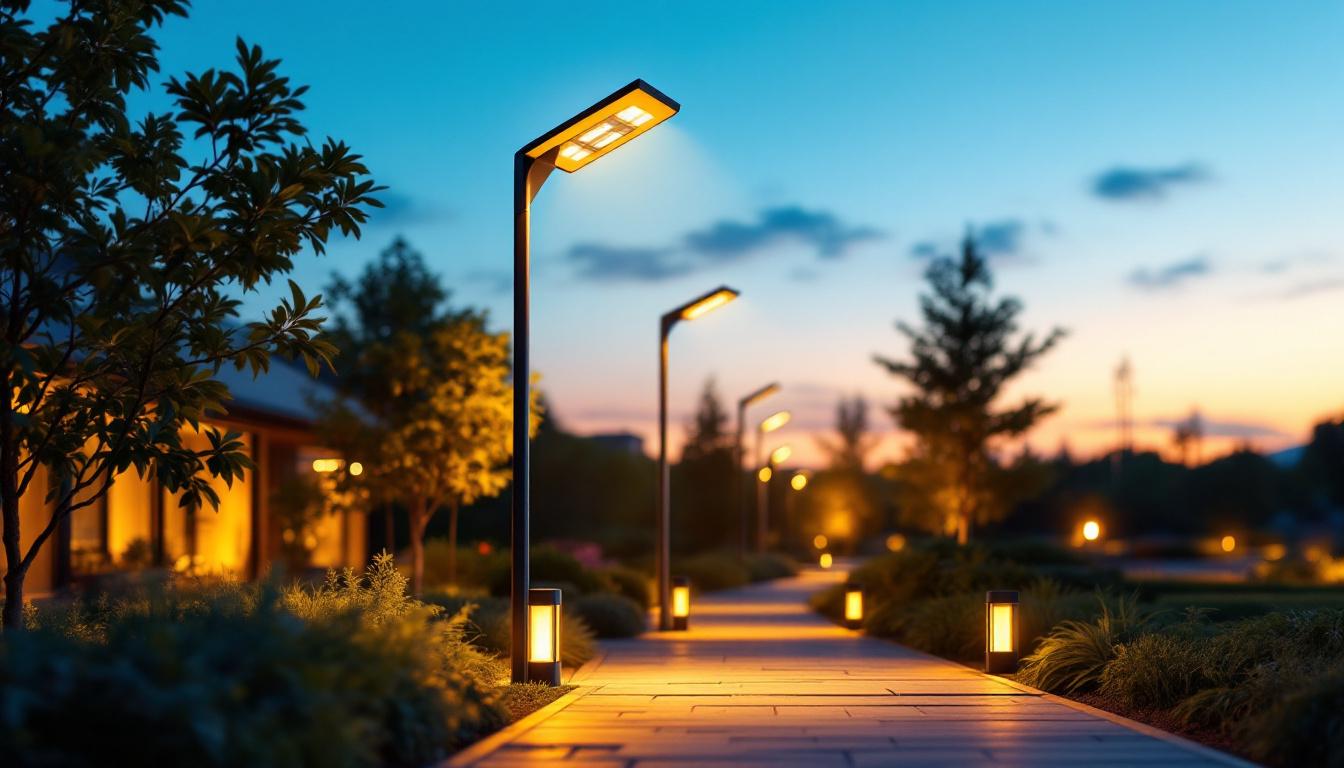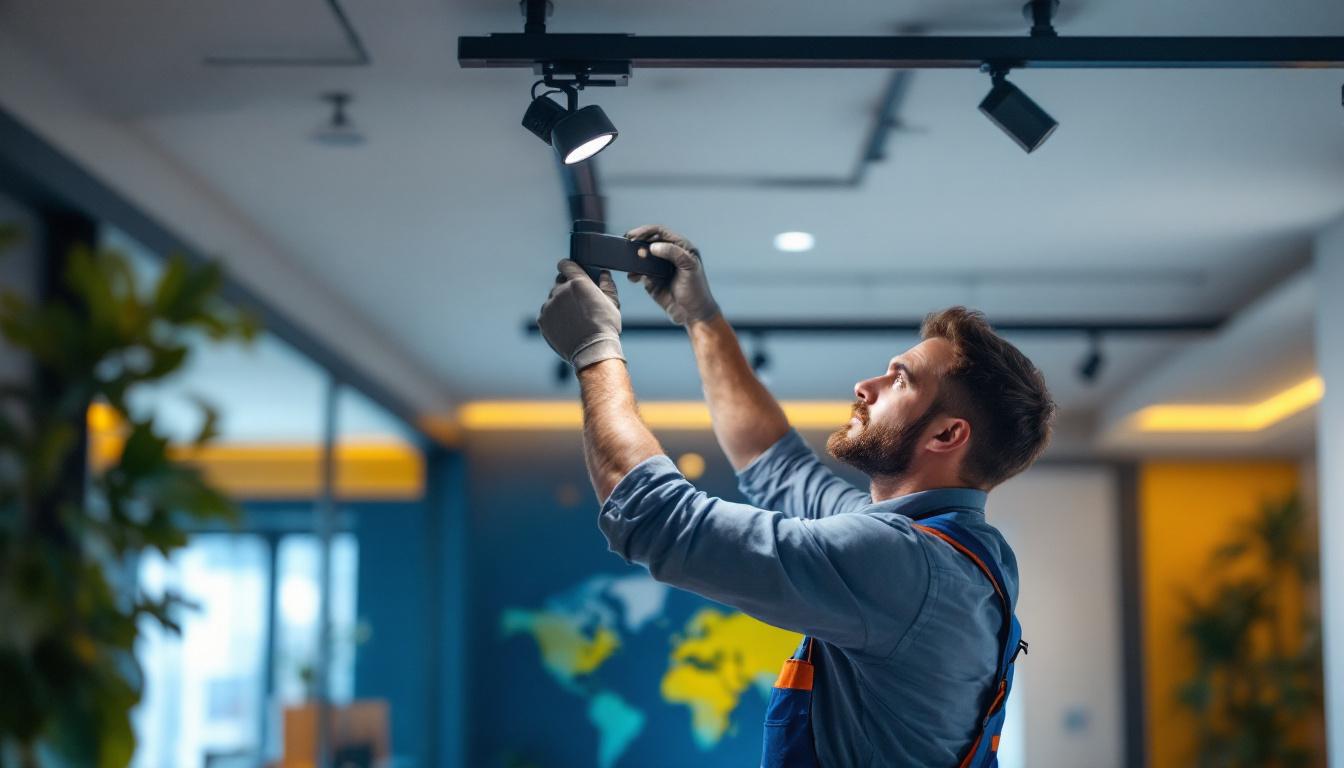
Lighting contractors play a pivotal role in the design and implementation of effective lighting solutions. However, navigating the complexities of DLC (DesignLights Consortium) listed fixtures presents a unique set of challenges. Understanding these challenges is essential for contractors aiming to provide high-quality service while ensuring compliance with industry standards. This article delves into the top challenges faced by lighting contractors when dealing with DLC listed fixtures, offering insights and strategies to overcome them.
The DesignLights Consortium is an organization that promotes high-quality, energy-efficient lighting products. DLC listings serve as a benchmark for performance, ensuring that fixtures meet stringent criteria in terms of efficacy, quality, and reliability. For lighting contractors, understanding the nuances of these listings is crucial for project success.
DLC listings are not just a regulatory requirement; they are a mark of quality. Fixtures that carry the DLC label are often eligible for rebates and incentives, making them more attractive to clients. This can significantly influence a contractor’s ability to secure projects, as clients increasingly seek energy-efficient solutions that align with sustainability goals. Moreover, using DLC-listed products can enhance a contractor’s reputation, as it demonstrates a commitment to providing clients with the best available technologies that not only meet but exceed industry standards.
Additionally, the importance of DLC listings extends beyond immediate financial benefits. As energy efficiency becomes a focal point in building design and renovation, contractors who are well-versed in DLC criteria can position themselves as experts in the field. This expertise can open doors to new opportunities, such as partnerships with architects and developers who prioritize sustainable practices in their projects. By staying informed about the latest changes and updates in DLC standards, contractors can ensure that they remain competitive in a rapidly evolving market.
DLC categorizes fixtures into various types, including indoor and outdoor lighting, which can complicate the selection process. Each category has specific requirements that must be met, and understanding these distinctions is vital for contractors. Failure to select the appropriate category can lead to compliance issues and project delays. For instance, indoor fixtures may have different lumen output requirements and color temperature specifications compared to outdoor fixtures, which need to withstand environmental factors like moisture and temperature fluctuations.
Furthermore, within each category, there are subcategories that address specific applications, such as street lighting, parking garage lighting, or commercial office lighting. Each of these subcategories has unique performance metrics and design considerations that must be taken into account. Contractors must be diligent in researching these subcategories to ensure that the selected fixtures not only comply with DLC standards but also meet the specific needs of the project. This level of detail can significantly impact the overall effectiveness and efficiency of the lighting solution, ultimately leading to enhanced satisfaction for both the contractor and the client.
One of the primary challenges contractors face is the selection of the right DLC listed fixtures for specific applications. With a vast array of products available, making informed choices can be daunting. The diversity in design, functionality, and energy efficiency ratings means that contractors must not only familiarize themselves with the products but also stay updated on the latest advancements in lighting technology. This can be particularly overwhelming given the rapid pace of innovation in the industry.
Ensuring compatibility with existing systems is a significant concern. Many projects involve retrofitting older lighting systems with new DLC listed fixtures. This process requires a thorough understanding of both the new products and the existing infrastructure. Mismatched fixtures can lead to performance issues and increased costs, making careful selection imperative. Additionally, contractors must consider factors such as electrical load, fixture placement, and even aesthetic integration to ensure that the new fixtures harmonize with the overall design of the space. The challenge is not just technical; it also involves communicating effectively with clients about the potential limitations and benefits of the upgrade.
Each DLC listed fixture comes with a set of technical specifications, including lumen output, wattage, and color temperature. Contractors must be well-versed in these specifications to recommend the best options for their clients. Misinterpretation of these details can result in subpar lighting solutions that fail to meet client expectations. Furthermore, understanding the implications of these specifications goes beyond mere numbers; it involves grasping how they affect the ambiance and functionality of a space. For instance, the choice of color temperature can significantly influence the mood of an environment, making it crucial for contractors to align their selections with the intended use of the area, whether it’s a warm, inviting atmosphere for a restaurant or a bright, focused setting for an office. Additionally, energy efficiency ratings and potential rebates for using DLC listed products can also play a pivotal role in the decision-making process, adding another layer of complexity to fixture selection.
Compliance with local and national regulations is another critical challenge for lighting contractors. DLC listings are often tied to specific energy codes, and staying updated on these regulations is essential for project success. Failure to comply can result in penalties, project delays, and even the loss of contracts, making it imperative for contractors to prioritize understanding these regulations.
The lighting industry is constantly evolving, with new regulations and standards emerging regularly. Contractors must invest time in staying informed about changes to DLC criteria and local energy codes. This can involve attending workshops, reading industry publications, and engaging with professional organizations. Additionally, leveraging online resources such as webinars and forums can provide valuable insights into best practices and upcoming regulatory shifts. Networking with peers in the industry can also serve as a vital source of information, enabling contractors to share experiences and strategies for navigating compliance challenges effectively.
Proper documentation is crucial for demonstrating compliance with DLC standards. Contractors must ensure that all necessary paperwork, including product certifications and installation documentation, is meticulously maintained. This not only helps in meeting regulatory requirements but also builds trust with clients. Furthermore, maintaining an organized system for documentation can streamline the process of audits and inspections, reducing stress and potential setbacks. In addition to standard compliance documents, contractors may also need to prepare reports that detail energy savings and performance metrics, showcasing the effectiveness of their installations and reinforcing their commitment to quality and sustainability.
In addition to staying informed and maintaining documentation, ongoing training and development for staff is essential. As regulations change, so too must the knowledge and skills of the workforce. Contractors should consider implementing regular training sessions that focus on new technologies, compliance updates, and best practices in energy efficiency. This not only ensures that all team members are equipped to handle the latest challenges but also fosters a culture of continuous improvement within the organization. By investing in their workforce, contractors can enhance their reputation and position themselves as leaders in the industry, capable of delivering compliant and innovative lighting solutions.
Once the appropriate fixtures have been selected, installation poses its own set of challenges. Proper installation is critical to ensure that the fixtures perform as intended and meet DLC standards.
Many contractors may find that their teams require additional training to install DLC listed fixtures correctly. These fixtures often come with specific installation guidelines that differ from traditional lighting products. Investing in training programs can enhance the skills of the workforce, leading to more efficient installations and reduced error rates.
Each installation site presents unique conditions that can complicate the process. Factors such as ceiling height, existing electrical infrastructure, and environmental conditions can all impact installation. Contractors must be adaptable and prepared to address these challenges on-site to ensure a successful outcome.
Cost management is a significant concern for lighting contractors, especially when dealing with DLC listed fixtures. While these fixtures often lead to long-term savings through energy efficiency, the upfront costs can be a barrier for some clients.
Clients may have limited budgets, which can lead to difficult conversations about the value of investing in DLC listed fixtures. Contractors must be adept at communicating the long-term benefits of these products, including energy savings and potential rebates, to help clients understand the return on investment.
The supply chain for lighting products can be unpredictable, leading to delays and increased costs. Contractors must manage these risks by establishing strong relationships with suppliers and maintaining flexibility in project timelines. Being proactive in sourcing materials can help mitigate some of these challenges.
Effective communication with clients is essential throughout the project lifecycle. Educating clients about the benefits and features of DLC listed fixtures can enhance their understanding and satisfaction.
Contractors should take the time to set realistic expectations regarding the performance and capabilities of DLC listed fixtures. This includes discussing potential energy savings, maintenance requirements, and the expected lifespan of the products. Clear communication can prevent misunderstandings and foster a positive client relationship.
Providing ongoing support after installation is crucial for maintaining client satisfaction. Contractors should be available to address any questions or concerns that arise post-installation. This support can include guidance on fixture maintenance and troubleshooting, ensuring that clients feel confident in their investment.
As the lighting industry continues to evolve, staying ahead of trends is vital for contractors. Emerging technologies and changing consumer preferences will shape the future of DLC listed fixtures.
The rise of smart lighting technology is transforming the industry. Many DLC listed fixtures are now compatible with smart systems, allowing for enhanced control and energy management. Contractors must familiarize themselves with these technologies to offer clients innovative solutions that meet their needs.
With an increasing emphasis on sustainability, clients are looking for lighting solutions that align with their environmental goals. DLC listed fixtures are often designed with energy efficiency in mind, making them a natural choice for eco-conscious consumers. Contractors should be prepared to discuss the sustainability benefits of these products in their proposals.
Navigating the challenges associated with DLC listed fixtures requires a comprehensive understanding of the products, regulations, and client needs. By addressing issues related to fixture selection, compliance, installation, cost management, and client communication, lighting contractors can position themselves for success in a competitive marketplace.
As the industry continues to evolve, staying informed about emerging trends and technologies will be essential for contractors looking to remain relevant. By embracing these challenges and leveraging the opportunities they present, lighting contractors can enhance their service offerings and drive business growth.
Ready to overcome the challenges of DLC listed fixtures and elevate your lighting projects? At LumenWholesale, we support your goals by providing spec-grade lighting products that meet the highest industry standards. Say goodbye to inflated markups and hello to unbeatable wholesale prices, free shipping, and the convenience of bulk buying. Don’t compromise on quality or value; choose LumenWholesale for your lighting needs and make every project shine. Discover our extensive selection and Wholesale Lighting at the Best Value today.

Discover essential tips for lighting contractors to enhance outdoor spaces with solar lighting.

Discover how solar powered pole lamps are revolutionizing the lighting industry with sustainable technology, cost efficiency, and innovative design.

Discover how lighting contractors can enhance their projects and profitability with LED lighting tracks.

Discover innovative strategies to effectively train your team in utilizing modern solar lanterns.